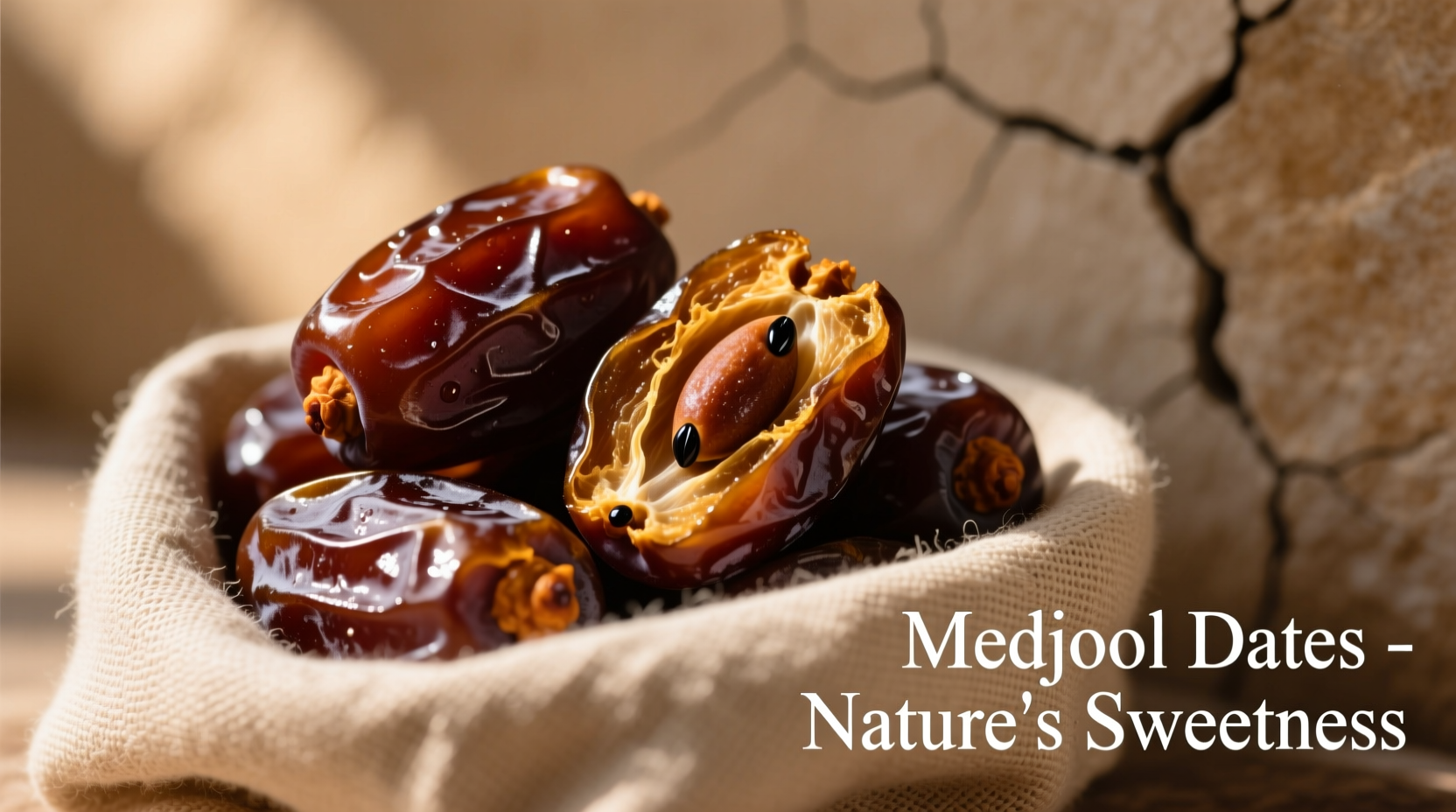Ever wondered what makes dates such a beloved superfood across cultures? These caramel-like fruits deliver instant energy while providing surprising health benefits. Whether you're seeking natural sweeteners, plant-based nutrition, or versatile cooking ingredients, dates offer solutions that modern science continues to validate.
Understanding Date Fruit Basics
When you ask what are dates food, you're exploring one of humanity's oldest cultivated crops. Date palms produce clusters of oval fruits that transform from green to deep brown as they ripen. Unlike many fruits, dates contain no fat and derive their sweetness from natural fructose and glucose.
Nutritionally, dates stand out among dried fruits. A single Medjool date (about 24g) provides:
| Nutrient | Amount per Date | Daily Value % |
|---|---|---|
| Calories | 66 | 3% |
| Fiber | 1.6g | 6% |
| Potassium | 167mg | 4% |
| Magnesium | 15mg | 4% |
| Iron | 0.2mg | 1% |
Major Date Varieties Compared
Understanding what are dates food options requires knowing the primary varieties available. Each type offers distinct textures, flavors, and culinary applications:
| Variety | Texture | Sweetness Level | Best Uses |
|---|---|---|---|
| Medjool | Soft, chewy | ★★★★★ | Snacking, desserts, energy balls |
| Deglet Noor | Firm, slightly dry | ★★★☆☆ | Cooking, baking, chopped applications |
| Barhi | Crisp when fresh | ★★★★☆ | Fresh consumption, salads |
| Halawi | Buttery, soft | ★★★★☆ | Stuffing, date paste |
Historical Journey of Date Cultivation
The story of what are dates food throughout history reveals remarkable cultural significance. Archaeological evidence from eastern Arabia shows date cultivation dating back to 6000 BCE. Ancient Egyptians used dates in bread-making and winemaking as early as 4000 BCE. The fruit became so valuable that date palms were called "the tree of life" in Mesopotamian texts.
By 1500 BCE, date cultivation had spread along trade routes to North Africa and Mediterranean regions. Spanish missionaries later introduced date palms to California in the 18th century, establishing today's major US production centers. This historical context helps explain why dates remain central to Middle Eastern and North African cuisines.
Practical Applications in Modern Kitchens
Discovering what are dates food possibilities opens creative culinary doors. Professional chefs and home cooks alike utilize dates in numerous ways:
- Natural sweetener replacement - Blend 1 cup pitted dates with ¼ cup water to create date paste, substituting for sugar in baking
- Energy-boosting snacks - Stuff dates with nuts or seeds for portable protein-rich treats
- Savory-sweet pairings - Combine with bacon, blue cheese, or roasted vegetables
- Smoothie enhancer - Add natural sweetness and creaminess without dairy
Storage Guidelines for Maximum Freshness
Proper storage determines how long dates maintain their quality. Fresh dates last 1-2 weeks refrigerated in airtight containers. For extended preservation, freeze dates for up to 12 months. The USDA recommends storing dates below 30°F (-1°C) for optimal longevity while maintaining nutritional value.
When purchasing dates, look for plump, moist specimens without excessive crystallization. Avoid dates with white spots, which may indicate sugar bloom (harmless) or mold (should be discarded).
Nutritional Considerations and Health Benefits
Research from the Journal of Food Composition and Analysis confirms dates contain significant antioxidant compounds, including flavonoids and carotenoids. These contribute to potential health benefits such as improved digestion, better blood sugar regulation compared to refined sugars, and enhanced bone health due to mineral content.
However, people managing diabetes should consume dates in moderation due to their high natural sugar content. The American Diabetes Association suggests pairing dates with protein or fat sources to moderate blood sugar response.
Common Questions About Date Fruit
Understanding what are dates food essentials often leads to these practical questions:
Are dates and枣 the same fruit?
No, dates (Phoenix dactylifera) and Chinese dates (jujubes) are different fruits from unrelated plant families. Dates grow on palm trees in arid regions, while jujubes come from small deciduous trees native to Asia.
How many dates should I eat daily?
Nutritionists generally recommend 4-6 dates per day as part of a balanced diet. This provides about 250 calories and meets approximately 15% of your daily fiber needs while keeping sugar intake moderate.
Can dates replace sugar in recipes?
Yes, you can substitute date paste for sugar at a 1:1 ratio in most recipes. Blend 1 cup pitted dates with ¼ cup warm water until smooth. Reduce other liquids slightly since date paste adds moisture to baked goods.
Why do some dates have pits while others don't?
All fresh dates contain pits (seeds). Pitted dates have had their seeds removed mechanically. Some specialty dates are stuffed with ingredients like almonds or walnuts after pitting, creating ready-to-eat premium products.
Do dates cause weight gain?
Dates contain natural sugars but also provide significant fiber and nutrients. When consumed in moderation as part of a balanced diet, they don't typically cause weight gain. Their fiber content promotes satiety, potentially reducing overall calorie intake compared to processed sweets.











 浙公网安备
33010002000092号
浙公网安备
33010002000092号 浙B2-20120091-4
浙B2-20120091-4